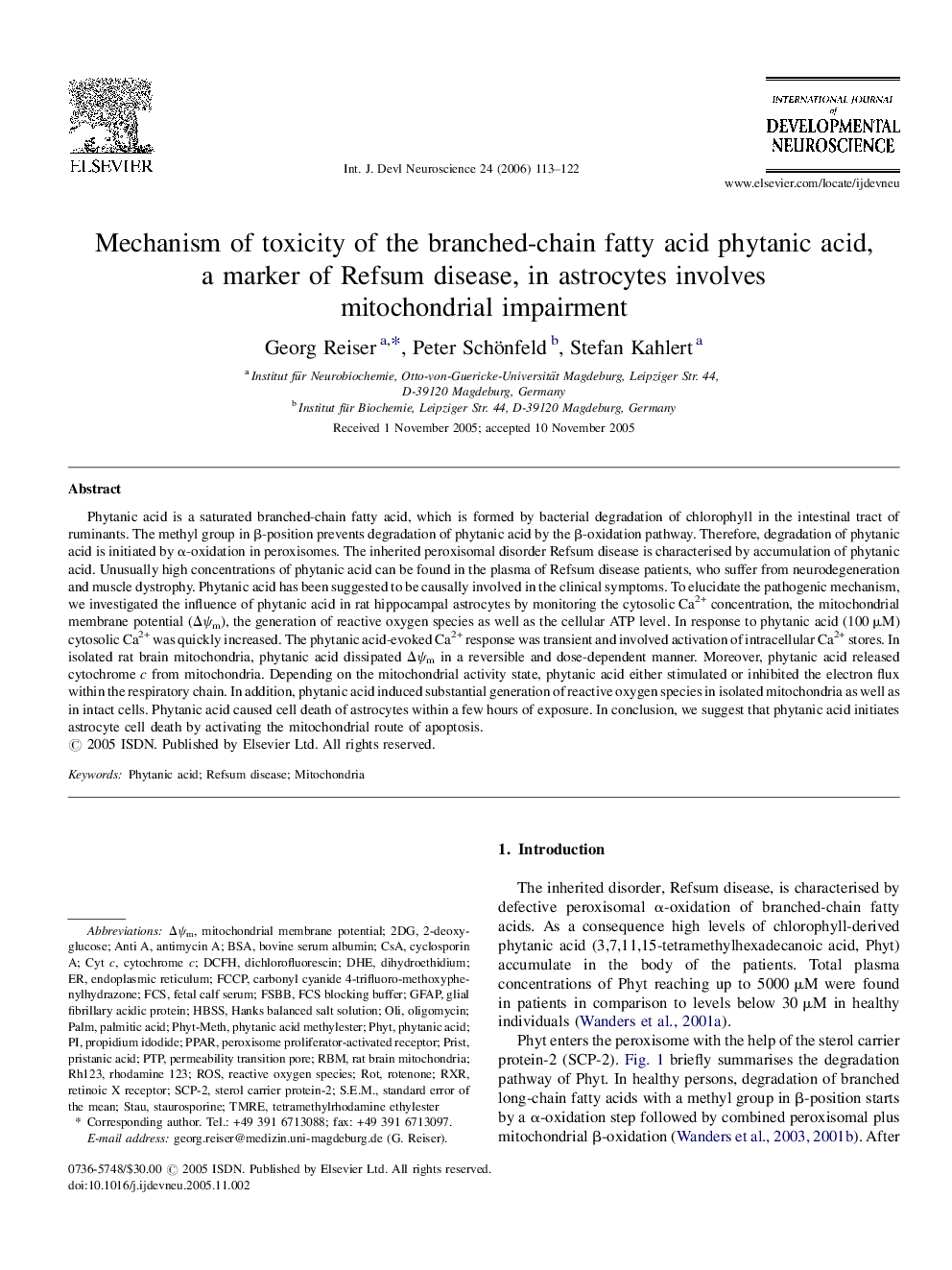| Article ID | Journal | Published Year | Pages | File Type |
|---|---|---|---|---|
| 2787167 | International Journal of Developmental Neuroscience | 2006 | 10 Pages |
Phytanic acid is a saturated branched-chain fatty acid, which is formed by bacterial degradation of chlorophyll in the intestinal tract of ruminants. The methyl group in β-position prevents degradation of phytanic acid by the β-oxidation pathway. Therefore, degradation of phytanic acid is initiated by α-oxidation in peroxisomes. The inherited peroxisomal disorder Refsum disease is characterised by accumulation of phytanic acid. Unusually high concentrations of phytanic acid can be found in the plasma of Refsum disease patients, who suffer from neurodegeneration and muscle dystrophy. Phytanic acid has been suggested to be causally involved in the clinical symptoms. To elucidate the pathogenic mechanism, we investigated the influence of phytanic acid in rat hippocampal astrocytes by monitoring the cytosolic Ca2+ concentration, the mitochondrial membrane potential (Δψm), the generation of reactive oxygen species as well as the cellular ATP level. In response to phytanic acid (100 μM) cytosolic Ca2+ was quickly increased. The phytanic acid-evoked Ca2+ response was transient and involved activation of intracellular Ca2+ stores. In isolated rat brain mitochondria, phytanic acid dissipated Δψm in a reversible and dose-dependent manner. Moreover, phytanic acid released cytochrome c from mitochondria. Depending on the mitochondrial activity state, phytanic acid either stimulated or inhibited the electron flux within the respiratory chain. In addition, phytanic acid induced substantial generation of reactive oxygen species in isolated mitochondria as well as in intact cells. Phytanic acid caused cell death of astrocytes within a few hours of exposure. In conclusion, we suggest that phytanic acid initiates astrocyte cell death by activating the mitochondrial route of apoptosis.
